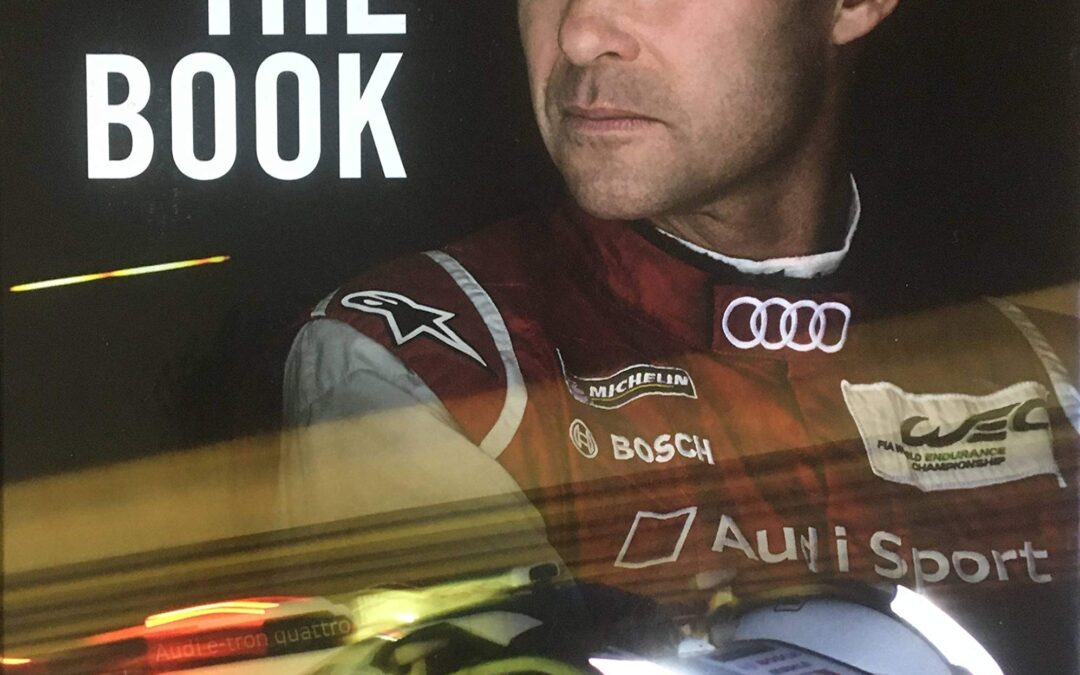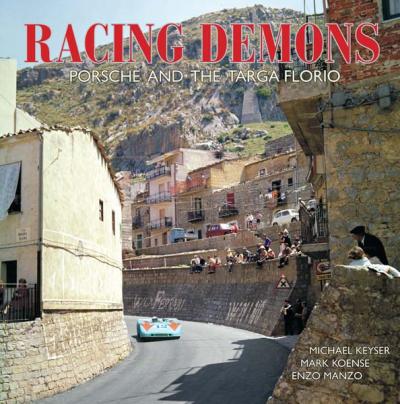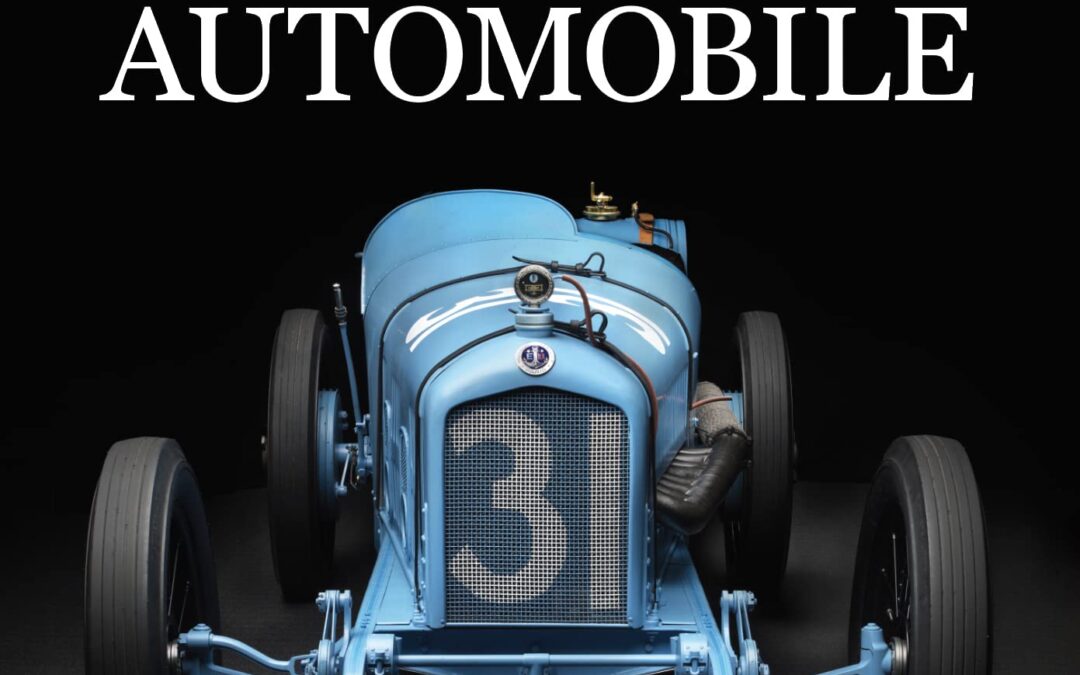
In the last one hundred years, cars have shaped our lives. Other everyday cultural artifacts, such as watches, telephones, musical instruments, and televisions, have certainly had influence, but the car is by far the most significant. Now, change is coming for the car, as it is for so many other industrial artifacts. Once, cars were distinct machines. Now, they are evolving into multifunctional digital devices. New fuels, new modes of travel, and new technologies are disrupting the traditional role of the much-loved family car.
What is to become of this material legacy? Should we really let go of it? Without memory, personal and shared, we lose our way, our individuality, and our culture. This proposition is at the heart of The Archaeological Automobile.
Miles C. Collier’s landmark approach uses an “archaeological mindset” to interpret the automobile as a cultural artifact in six themes:
The Development of the Automobile describes how the car emerged from a pressing human need for mobility, tracing our relationship with horses, our invention of the bicycle, and how we turned our backs on both as daily transport for the allure of the car.
The Rise of the Collectible Automobile asks how and why ratty relics decaying in recycling yards can become valuable and treasured collectibles. It reveals the effect of cultural influences on our perception of cars and on the dynamics of the collector car market.
The Archaeological Mindset picks up a wrench, gets into the workshop, and tracks the restoration of a 1919 Ballot Indy car using hands-on experience and background research while deploying the “archaeological imagination.” The archaeological clues are in the detail.
Collecting and the Archaeological Automobile deals with the characteristics of collecting. Why do we accumulate “stuff”? Is it greed? Is it passion? Is it a desire for legacy? And what makes a “good” collection? Is it bling? Is it style? Is it material worth? The answer lies in connoisseurship.
Restoring the Archaeological Automobile debates the merits of diverse restoration strategies and the reasoning behind them, including the tricky question of how to repaint the tilt-front nose of a 1964 Alfa Romeo GTZ racing car and still preserve the evidence of forty years of accumulated sandblasting and chipping.
The Archaeological Automobile of the Future is a call to action. Cars as we know them are customarily trashed, government regulations encourage indifference, and the skills and knowledge associated with fixing them are slowly vanishing as we lose older generations of experienced craftsmen. How can we preserve humanity’s treasure trove of automotive knowledge for generations to come?
Filled with engaging stories and practical examples, this is a handbook of the most thoughtful practices, not just for automobile owners and the historical car industry, but for collectors, professionals, and users of all kinds of industrial era artifacts.
The Archaeological Automobile combines scholarship, pertinent anecdotes, style, and experience to provide a stimulating account of why we should all be archaeologists now.

The versatility of the sleek metallic gems of Airstream has captured the imagination of a new generation. Paris Hilton used one to tour the country in The Simple Life. Designer Ralph Lauren owns four. Airstream Living explores these vehicles’ many uses, from vacation travel to permanent residence, from home office to pool house, from on-set accommodation for movie stars to businesses such as diners and stores.
In its pages, profiles of real-life owners reveal how they use their trailers to enhance their lifestyle, and vacationers will find advice on how to get the most out of Airstreams. Inspirational photographs accompany advice on decorating interiors in styles that range from the simple to opulent: retro chic, Ralph Lauren’s Adirondack and Western themes, a seaside look for coastal touring, and much more. Practical advice covers everything from buying your first Airstream to care and cleaning tips to solutions for storage. A directory provides a thorough listing of suppliers and websites.
For anyone who owns an Airstream or is thinking about purchasing one, this book is a must-read for living life to the fullest aboard a land yacht.
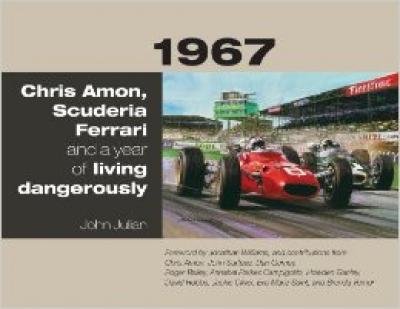
“1967 was a milestone year in motor racing. For Ferrari, the season started with sports-car victories at Daytona and Monza, but soon turned tragic with the death of Lorenzo Bandini after an accident at the Monaco Grand Prix. At Spa, another spectacular accident put Mike Parkes out of action with two broken legs, and prompted Ludovico Scarfiotti to quit the Ferrari team. That left Chris Amon, a 23- year old New Zealander in his first year with the Italian team, to fight on alone until the year’s last race in Mexico. He would finished fourth in the F1 Drivers Championship after reaching the podium four times.
While Amon and Ferrari take center stage, 1967 also looks at the other drivers, teams, and events that shaped the campaign for the championship. The book includes observations and memories from such leading drivers as John Surtees and Dan Gurney, as well as informed insiders like Amon’s countryman Howden Ganley, Enzo Ferrari’s assistant Brenda Vernor, and Grand Prix star Eva Marie Saint. It also goes beyond Amon’s time with Ferrari, covering both his early years with the Cooper and Parnell teams, his 1966 victory at Le Mans with Bruce McLaren, and his later career with March and Matra.
Amon worked closely with author John Julian to explain exactly what it was like to compete at the highest level during a unique moment in motorsports history, and his first-hand recollections give the book a very personal quality. Julian’s vibrant prose and extended quotes from key characters make 1967 a fast-paced read, with a wealth of photographs adding atmosphere and excitement. And while the book includes enough detail to satisfy the most serious fan, it also offers a wider view of a bygone era by noting other events in the news, popular songs of the day, and local details about each major race.
”

Learn how to maximize your profits and savings when buying and selling collector cars!
The dealership model is an American institution, and auction houses can trace their roots back to the days of dusty cattle sales. Both have remained unchanged. Since the early 2000s, the internet has shaken up these legacy methods of finding, buying, and selling vintage cars, as a global online marketplace that is open to anyone.
CarTech, in conjunction with Patrick Krook of REV! Muscle Cars, introduces a proven process drawn from 20 years of experience building some of the world’s most significant classic car collections. Whether you are a first-time buyer or an established collector, this book shows you how to locate and buy your dream collector car stress free. Get the car you are expecting every time, creating positive cash flow and keeping the hobby fun for years to come.
Inside this book is an easy-to-follow, heavily illustrated step-by-step method to find, evaluate, negotiate, close, fund, and take delivery of a collector car safely over the internet without leaving your living room. It also includes how to avoid costly purchase mistakes, such as overpaying, fakes, or buying someone else’s headache. Better yet, it delves into details about how to always sell out of advantage, minimizing the overall amount you invest as you build your collection over time. Lastly, it provides all the tools you need for buying and selling when you have that person-to-person driveway transaction.
Why spend tens of thousands of dollars on dealership retail markup, auction fees, and failed purchases when you can obtain your dream car, keep more money in your pocket, and spend more quality time enjoying the hobby? How to Buy and Sell Collector Cars takes you from being a novice to a seasoned buyer/seller while you enjoy the adventure of car collecting.
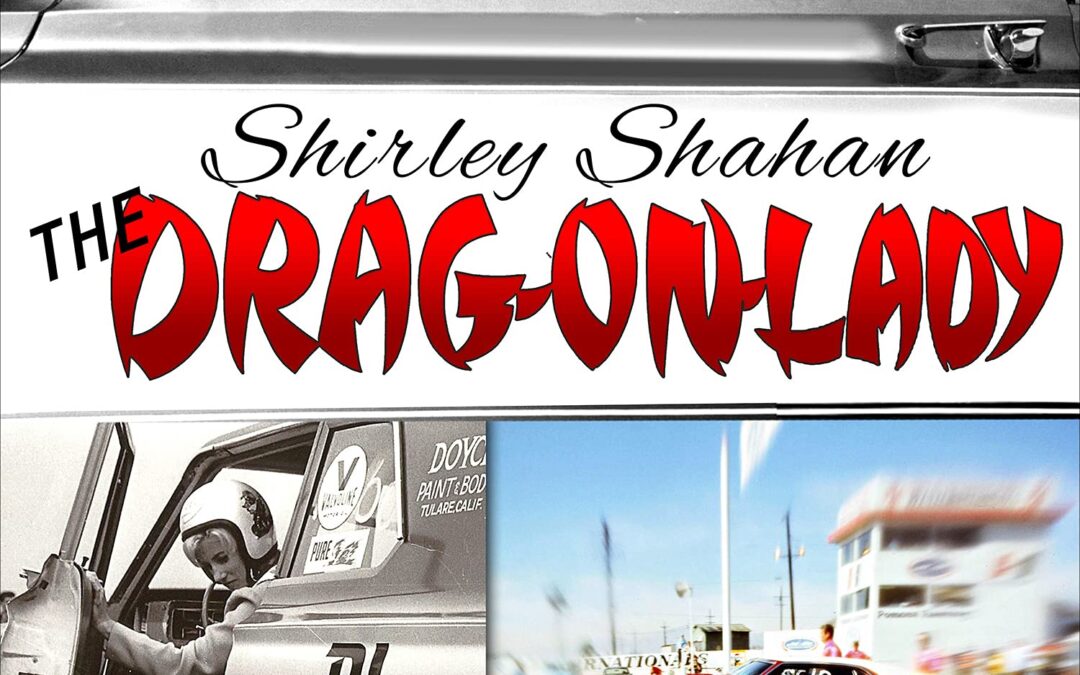
Meet drag racing legend and pioneer Shirley Shahan, the Drag-On Lady!
As the first woman to win an NHRA national event when she was named Top Stock Eliminator at the 1966 Winternationals, Shahan blazed a trail for women in drag racing. During the golden era of drag racing, it was rare to find diversity in the sport. Shahan is what’s commonly known as a living legend.
In a career that spanned the 1950s and into the early 1970s, Shahan drove 1956 and 1958 Chevys and was one of the lucky few who was able to purchase one of the rare 1963 Chevrolet RPO Z11 Super Stockers. Later, when she was driving for Plymouth and Dodge, Shahan made the name Drag-On Lady both famous and feared. She then moved to American Motors and raced very successfully with the new SS/AMX.
From 1958 to 1972, Shahan set records and won numerous awards. She was inducted into the International Drag Racing Hall of Fame, Super Stock Magazine Hall of Fame, and Mopar Hall of Fame, and she was honored with a lifetime achievement award at the Bakersfield racetrack. In addition, Shirley won the Top Stock category at the very first March Meet at the legendary the Famoso Raceway track near Bakersfield, California, which made her the first person (male or female) to do so. In 1966, she was the named one of Hot Rod magazine’s Top 10 Drivers.
She raced against the best drivers during the golden age of drag racing and more often than not blew off the doors of her opponents. She had a fierce passion for winning, and in this book, you’ll feel what it was like to be behind the wheel as she steers you through her illustrious career. Fasten your seat belt; it’s going to be a wild ride.
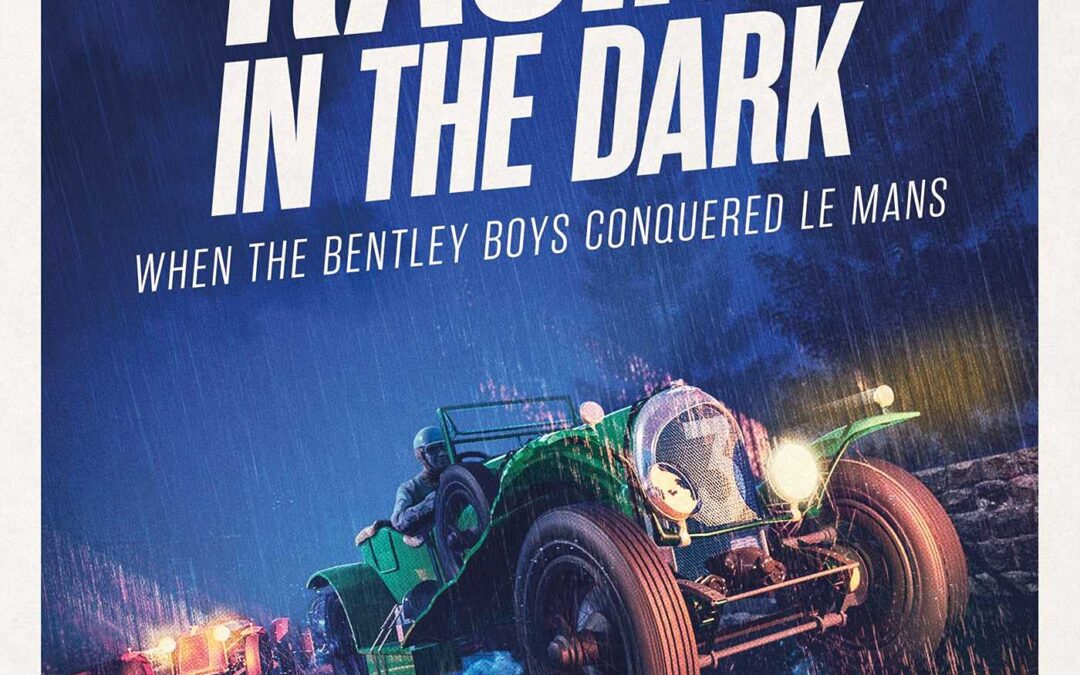
‘Glorious…gripping and sometimes tragic’ Robbie Coltrane
The inspirational story of the Bentley Boys and Le Mans – the race they made their own.
Le Mans, 1927. W.O. Bentley peered into the dusk. His three cars, which had led from the start, were missing. Two years running he had failed to finish. Once again he was staring into a void. Racing, his shareholders told him, was a waste of money. This race looked like being his last.
W.O’s engineering skills had been forged on the Great Northern railway and in the skies of the First World War, where Bentley-powered Sopwith Camels took the fight to Germany’s Red Baron. Determined to build and race his own cars, he assembled a crack team from all strata of 1920s Britain, from East End boys Leslie Pennal and Wally Hassan to multi-millionaires Woolf Barnato and Tim Birkin, men in search of adventures to blaze their way out of the dark past.
They dedicated themselves to building the perfect road and racing car. In the hayloft above their workshop, the first Bentley was born and soon it was the car of choice for the fast-living upper classes. They raced at the fashionable Brooklands circuit and then set their sights on the fledgling 24 Hours Le Mans race. An audacious goal for a British car, yet the Bentley Boys rose to the challenge. But on that night in 1927, after the biggest crash in racing history claimed their cars, could they still pull it off and put British motor racing on the map?
In the 1920s, Bentley Motors burned brightly but all too briefly; yet its tale, filled with drama, tragedy, determination and glory still shines a century on.
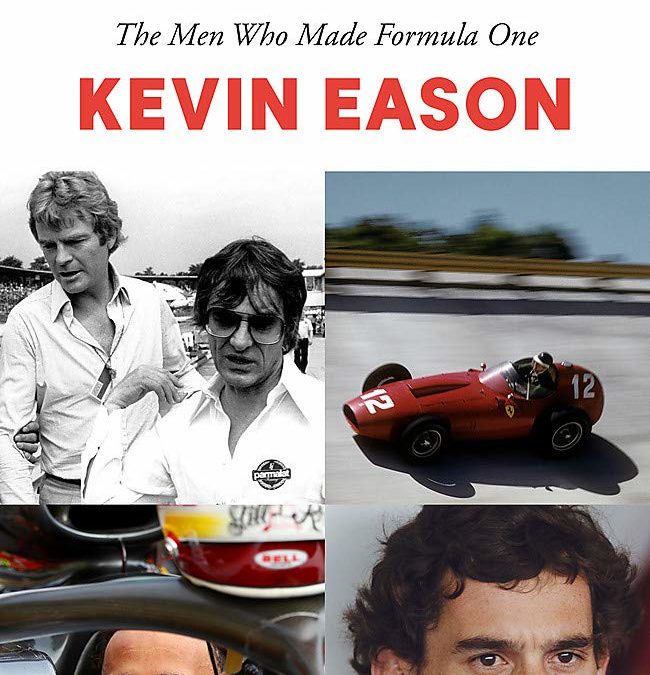
Formula One is speed, glamour, danger – and eye-watering wealth. Driven: The Men Who Made Formula One tells how a small group of extraordinary men transformed Formula One from a niche sport played out on primitive tracks surrounded by hay bales and grass verges into a £1 billion circus performing in vast theatres of entertainment all over the world.
Led by Bernie Ecclestone, the billionaire ringmaster, this clique started by scraping a living to go racing and ended up creating space-age cars, turning drivers from amateur gladiators into multimillion-pound superstars, like Ayrton Senna and Lewis Hamilton, while the names of Ferrari, McLaren and Williams are now as familiar around the world as Manchester United or Real Madrid.
For 20 years, Kevin Eason watched how these men operated like a sporting Mafia, protecting each other while squabbling over the vast wealth pouring into the sport. As motor racing correspondent for The Times and then with The Sunday Times, Eason was privileged to have a ringside seat as this cabal of wealthy characters ruled and then were pushed out of the sport they created.
This colourful and compelling account of the extraordinary flourishing of Formula One explores the quirks and extravagances of the men who converged – in one generation – to shape their sport; disparate characters with a common impulse: they were racers – and they were driven.
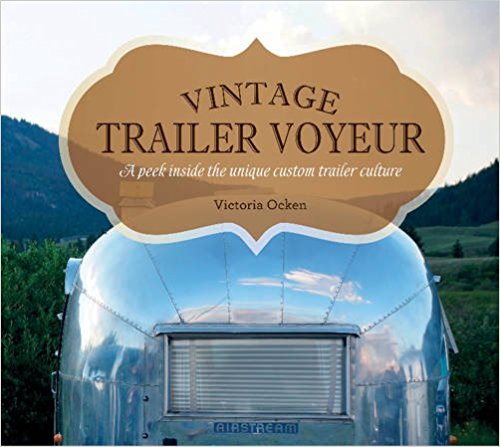
Take a fanciful journey into the world of vintage camping trailers through the stories of their owners. Almost 400 photos offer a peek at the rare, the unique, the coveted, and the just plain adorable. Tag along to a vintage trailer rally, visit an all-girls camp, and check out the decor of these jewels―ranging from original birch paneling, chenille bedspreads, and a period-perfect Dixie stove, to a “Sharkstream” trailer-as-art-installation. Those with the conviction that trailers deserve to be loved and lived in will enjoy exploring the possibilities as they search for, renovate, or simply dream of living in their own little piece of history.
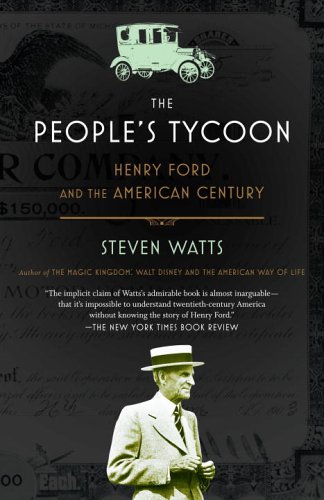
How a Michigan farm boy became the richest man in America is a classic, almost mythic tale, but never before has Henry Ford s outsized genius been brought to life so vividly as it is in this engaging and superbly researched biography.
The real Henry Ford was a tangle of contradictions. He set off the consumer revolution by producing a car affordable to the masses, all the while lamenting the moral toll exacted by consumerism. He believed in giving his workers a living wage, though he was entirely opposed to union labor. He had a warm and loving relationship with his wife, but sired a son with another woman. A rabid anti-Semite, he nonetheless embraced African American workers in the era of Jim Crow.
Uncovering the man behind the myth, situating his achievements and their attendant controversies firmly within the context of early twentieth-century America, Watts has given us a comprehensive, illuminating, and fascinating biography of one of America s first mass-culture celebrities.”

Are phantoms “alive” and walking the streets of Tinseltown and beyond?
Hollywood. Film capital of the world. Haunted Hollywood brings together twenty-five stories that capture both the spirit—and the spirits—of Tinseltown. These tales concern historic landmarks, theaters, watering holes, hotels, and houses that are haunted by movie stars, television personalities, and other celebrities. You will be shivering in your seat as you read about all these and more:
• Film siren Jean Harlow died at only twenty-six, but many believe she’s still “living” in her old home outside Beverly Hills.
• Elke Sommer, the German-born actress and artist, is convinced a ghost saved her life by waking her after her house caught fire. Who’s to say?
• John Wayne has ridden off into the Final Sunset, but he apparently misses his private yacht. He’s been known to come aboard from time to time. . .

The United States Navy’s first ironclad warship rose to glory during the Battle of Hampton Roads on March 9, 1862, but there’s much more to know about the USS Monitor. Historian John Quarstein has painstakingly compiled bits of historical data gathered through years of research to present the first comprehensive picture of the lives of the officers and crew who served faithfully in an iron ship unlike any vessel previously known. “The Monitor Boys,” a moniker the men gave themselves, is a reflection of how these hundred-odd souls were bound together through storms, battles, boredom and disaster. Just living aboard the ironclad took uncommon effort and fortitude. Their perseverance through the heat, stress and un-seaworthiness that defined life on the ship makes the study of those who dared it a worthy endeavor. Many recognized that they were part of history. Moreover, the Monitor Boys were agents in the change of naval warfare. Following Quarstein’s compelling narrative is a detailed chronology as well as appendices including crew member biographies, casualties and statistics and dimensions of the ship. Readers can dive into the world of the Monitor and meet William Flye, George Geer and the rest of the men who risked everything by going to sea in the celebrated “cheesebox on a raft” and became the hope of a nation wracked by war.

“””I am no helmeted, begoggled hero of the skies; picture me bookish, bespectacled, unable to hold even a teacup without rattling it. As a pilot, I am merely an amateur, and I know it. . . . I shouldn’t be talking. But I can’t help talking. For you take the air: the thin, substanceless air that can be made to bear a man; you take America; and you take an airplane, which of all the works of man is the nearest to a living being—you take those things and mix them up, and they will act as a drug which will knock all proper reticence right out of you. And so, here I go talking . . .””—from America from the Air In 1927, Charles Lindbergh made his historic solo flight across the Atlantic; Amelia Earhart became the first woman to do so in 1932. And so was born the golden age of flying. Aviators became the era’s new heroes and the airplane its icon. In early 1930s Chicago, a German-born graduate student became fascinated by the airplane and its usefulness as a great geographic and sociological tool. Wolfgang Langewiesche sold his car and used his meager salary to pay for flying lessons at 25 cents a minute. With the same passion America had taken to the road a decade earlier, Langewiesche took to the air. He eagerly inhaled the landscape and breathed observations about the country, writing a series of books that describe the heady excitement and freedom of flight and the stunning views of his adopted country from an entirely new vantage point—the sky. This new edited volume revives the writings from two of his now out-of-print books. America from the Air draws from Langewiesche’s classic account of his early experiences as a pilot, I’ll Take the High Road (first published in 1939 and praised by the New York Times as “”a stirring and revealing story, told with sensitiveness and lucidity and with the warmth of a modest personal charm””), and selections from his 1951 memoir, A Flier’s World, to create a distinctive book that provides a pioneering look at the American landscape as seen from the cockpit of a light plane. Langewiesche’s photographs from his cross-country flights circa 1939 evoke the era. Wolfgang Langewiesche is revered among pilots for his 1944 flying primer, Stick and Rudder, currently in its seventieth printing. Considered the bible of aviation, it tells us the “”how”” of flying; America from the Air tells us the “”why.”” Here his descriptions of the country offer unique perspectives on New England, the Midwest, and the Atlantic Coast from Virginia to Key West, at a time before the country was paved over by multilane expressways, suburban tract housing, and strip malls. His bird’s-eye view of America takes in small farms, deserted seashores, busy railway lines, and cities in which skyscrapers were still engineering marvels. With the keen eye of a surveyor and an uncommon talent for conveying the physical sensation of flying, he describes landscape in all its beauty and detail as it rolls out beneath him, unveiling its mysteries. Langewiesche is revealed here as an infectiously enthusiastic aviator and an unrivaled observer of the American landscape. In a new foreword, Langewiesche’s son, writer William Langewiesche, describes his father’s love of the view from above. Hokanson and Kratz’s introduction and biography update the reader, incorporating stories gleaned from recent interviews with the author.
”

This book is the result of nearly six years of research, gathering of materials and interviews. It presents a chronological listing of the 479th Fighter Group�s activities during the World War II era, from its beginnings until its deactivation. Based upon a summation of the group�s historical records, the account also contains personal anecdotes provided by many of the group�s former members as well as over 650 photos that serve to illustrate the narration. Hopefully through the assemblage of this information the memory of the group and the men who comprised the living, lifeblood of the 479th FG will be better known and remembered by future generations.

“Americans in search of family oriented domestic travel, safe and inexpensive, are buying trailers and RVs in record numbers. At the same time—with fantasies of Lauren Bacall sipping an extra-dry Gibson against a gleaming metal doorway in Palm Springs and Lucy and Desi’s madcap Long, Long Trailer trip—they crave the vanished luxury and quirkiness of antique auto trailers. Those simpler, slower days of freedom and security are being recaptured in trailers from all eras, rescued and restored as living, road-ready Americana.
Ready to Roll, with more than 300 color photographs, taps into this trend in gloriously illustrated and insightfully chronicled retro style. Here is the complete evolution of the trailer, from the utilitarian Covered Wagon to the aristocratic Airstream and Aerocar Land Yacht to the homemade Hammer Blows of the Depression. Here too are the people who drove these cherished chariots and increasingly lived in them in trailer parks, from the stereotypically seedy to the likes of Bing Crosby’s exclusive Blue Skies Trailer Village. The amazing camaraderie of groups like the Tin Can Tourists marks the trailer phenomenon as a major segment of American consciousness and history.
”

Whether it’s a new Formula One V10 wailing at almost 20,000rpm or the metallic howl of a classic V12, there is nothing on earth like the sound of a racing car at full speed – and if it’s a bright red Ferrari screaming by flat-out, then so much the better.
“Red Noise” has been produced by broadcast audio specialists to bring those sounds right into your living room, your car or your stereo headphones. It utilises incredible recordings made in areas that the general public can never hope to reach….with microphones mounted on the trackside guard rails, and even from right inside the famous Monaco tunnel!
Listen to the sounds of Ferraris, Maseratis and Alfa Romeos spanning more than 75 years of motor racing history and featuring the world’s most famous Grand Prix cars.
This is a genuinely unique aural experience, so push the ‘play’ button, close your eyes and let your imagination and “Red Noise” take you right to the trackside.
Ferraris – Old and New1. See Red, Hear Red! The Vintage Sports Car Club stages an annual meeting at Donington Park that is themed around Italian racing cars. ‘See Red’ is the name of the VSCC meeting and we went there to give you the chance to ‘Hear Red’ ! First there’s the harsh engine notes of a 1980 Ferrari 312T5 ‘flat-12’ (a car actually driven by Gilles Villeneuve!) This is followed by an ex-Michael Schumacher team car from 2002 which we hear idling, picking up the revs, warming up, then finally pulling out of the pits with that distinctive V10 howl.
2. Monaco Ferrari Parade There was a fantastic gathering of Ferraris at the Monaco Historic Grand Prix in 2004. We were there to record all those incredible sounds! Cars ranged from the very first Type 125 1500cc supercharged GP car as driven by Alberto Ascari to a 21st-century Schumacher V10. In fact, there were no less than five vee-tens on hand – two Eddie Irvine cars from 1997 and three Schumacher cars from 1998/99 and 2000.
3. Picking up the Pace More from La Piscine as the real demonstration got under way and the cars picked up to racing speeds. No wonder the Italian commentator was getting excited!
4. Old and New in Action Old and new cars take La Piscine en masse. The field includes both four-cylinder and V12 cars from the ‘fifties, a 3-litre Type 312 V12 from 1968 and no less than seven Type 312 flat-twelve ‘boxer’ engine cars. From more recent times there were V12s as driven by Michele Alboreto in 1987, Nigel Mansell in 1990 and Alain Prost in 1991. And last, but very far from least, were the five Irvine and Schumacher vee-tens! They all mean music to the ears of the ‘Ferraristi’….
5. More from Monaco More ‘red noise’ from the Monaco 2004 Ferrari tribute high-speed demonstration laps. Similar to the previous tracks but too good to waste – especially as we were recording with microphones actually right on the Monaco trackside guard rails!
6. Flat-Out Red! And now for a change of recording point – here are Ferraris- old and new – passing at speed on the Monaco start/finish straight.
7. Generations Apart A 1999 ex-Schumacher Ferrari V10 takes La Piscine in conjunction with a rear-engined Ferrari 246 ‘Dino’ V6 that Italy’s Lorenzo Bandini took to second place here at Monaco in 1966. Then comes a 2.5 litre Ferrari Type 625 – the car that Frenchman, Maurice Trintignant, won Monaco with in 1955. The old front-engined ‘four’ takes La Piscine in conjunction with another modern Ferrari V10.
8. The Ferrari Type 312 V12 Sit back and listen to the first Ferrari Type 312 warming up and blasting through the Monaco tunnel.
9. Jackie Ickx Remembers Belgian Grand Prix and Le Mans star, Jackie Ickx, was a young Ferrari driver in the early nineteen-seventies. He remembers those times for us and tells us what it was like to race at Monaco back then.
10. Flat-Twelve Ferraris Not until Ferrari re-designed its 3-litre V12 did they start scoring World Championship successes again. It powered Niki Lauda to world titles in 1975 and 1977, as well as Jody Scheckter in 1979. The engine had a distinctly harsh note. We hear it warming up at Monaco, then making several echoing passes through the Monaco tunnel and, finally, negotiating the La Piscine sequence of tight turns.
11. The ‘Other Flat-Twelve’ There was another ‘flat-twelve’ built in Italy during the seventies, this one by the Alfa Romeo team in Milan. This is what that car would have sounded like back then, warming up and then blasting off, flat-out.
12. The Last F1 Vee-Twelves Ferrari stuck with V12 engine power right through the mid-nineties with Frenchman, Jean Alesi and Austria’s Gerhardt Berger driving the Type 412 team cars until the end of the 1995 season. By then, it was obvious that the V10 layout was definitely the most efficient of all of the Formula One options. Even so, the heavier, longer V12 took the 412 to a number of GP wins – and it sounded great in the process!
13. Into the 21st Century This is the unmistakable sound of V10-powered Ferraris howling by our microphones on the trackside barriers. First we hear some individual passes, then a whole group of vee-tens finish the track. These are all cars driven by either Michael Schumacher or Eddie Irvine between 1997 and 2000.
Maserati from Modena
14. Vintage Red Maserati is one of the oldest names in motorsport. Listen to a couple of vintage Maserati racers warming up – a four-cylinder 4CLM from 1939 and a six-cylinder 6CM from the 1937 season. These supercharged 1500cc cars would have raced in the ‘voiturette’ class – the nineteen-thirties equivalent of the Formula Two (or GP2) category.
15. A Fifties Favourite The six-cylinder Maserati 250F was one of the favourite 2.5 litre Formula One cars of the fifties – both with the fans and with its drivers. Listen to a group of them fire up, pull out of pits and then pass by on a flying lap.
16. Maseratis En Masse! A full field of twenty cars in a ‘Maserati-only’ race at the Vintage Sports Car Club’s ‘See Red’ event at Donington Park. They range from pre-war four, six and eight-cylinder supercharged cars to a whole pack of what is one of the most-admired Grand Prix cars of all time, the six-cylinder Maserati 250F. Hear them on the parade lap, and in race action through Redgate Corner.
17. Maserati at Monaco The throaty sound of a six-cylinder Maserati 250F as it warms up, followed by the rumble and the roar of a full field of ‘fifties Formula One cars on their warm-up lap.
18. Monaco Shark Hunt! The three-pronged trident is famous as the weapon of Neptune, or Poseidon – the God of the Sea and it has also always been the emblem of Maserati. So it’s perhaps appropriate that we hear a pack of 250F Maseratis chasing a Ferrari Type 555 ‘Squalo’ – or ‘Shark’ through the tight left-hander before Monaco’s Rascasse hairpin.
19. GP Rivals Warm Up A Bugatti Type 35 warms up in the Monaco pits. It carries the racing blue of France where the cars were built. Then an Alfa Romeo P3 is push-started into life and joins the mechanical chorus.
20. Right on the Rail! A full field of more than thirty great cars of ‘the golden age’ rumble around on a warm-up lap, take the start and attack the opening laps of a race around the Monaco streets. You are right up with the action thanks to our stereo microphones positioned right on the trackside safety barriers.
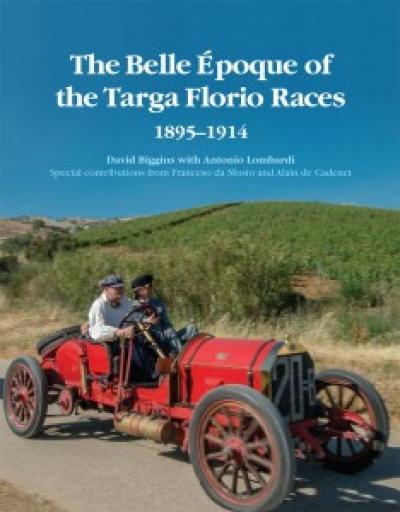
“The Belle Epoque (The Beautiful Age) coincides with the period of Edwardian extravagance so well depicted in the now famous TV series “Downton Abbey”. During this era, at the turn of the 20th century, Paris was the epicentre of fashion and art , London of society and class, Vienna of intellectual activity. New York’s own golden age was based on money, that classic American value!
There was an ebullient atmosphere everywhere , decadent and magnificent at the same time, coinciding with the momentous changes brought by modern inventions including wireless communication, the automobile, and the airplane. The privileged and moneyed classes enjoyed lives of extravagant luxury in sharp contrast to the desperate lives of the under classes, urban and rural. This contrast was even more evident in Sicily, where so many still endured medieval conditions. Palermo was one of Europe’s capitals of the period, visited regularly by royalty including the Czar of Russia and Germany’s Kaiser.
During those same years Vincenzo Florio, scion of Sicily’s leading family, created his eponymous race, the Targa Florio. He was only 23 when its first edition took place in 1906, but the honor committee included the presidents of the Automobile Clubs of the United Kingdom, France and Germany. Florio intended Sicily to be at the center of the blossoming new world of auto racing . He succeeded beyond his wildest dreams, and his story is being made into a movie titled ” Pistons, Passions & Sicilian Pleasures”. It will recount the early life of Vincenzo Florio and his friend and protege Felice Nazzaro, destined to become one of the greatest drivers of all time.
As a prelude to the release of the film, Upfolds Publishing announces the publication of the companion book..
The book narrates the experience of making this film. It is rich in illustration both historical and modern. The photographic artist Becca Parker captures both the beautiful landscapes of Sicily and the excitement of one hundred year old racing cars, reliving the passions of the Targa Florio, the oldest race in the world.
The book is a hard covered coffee table style in high definition.
“
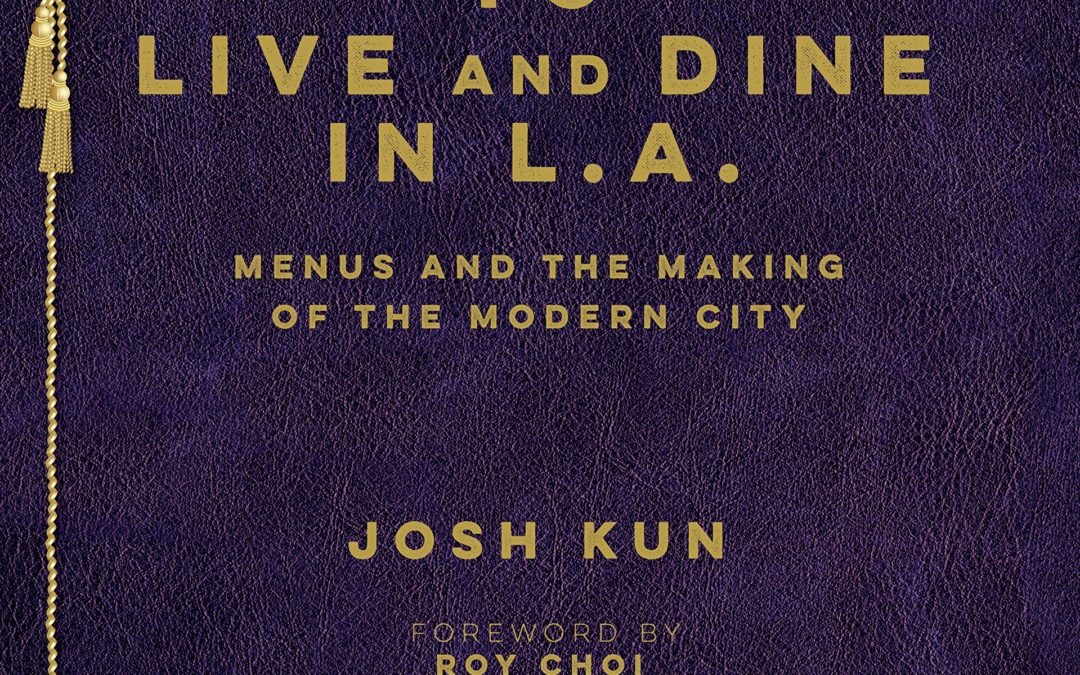
How did Los Angeles become the modern city the world watches? We know some of the answers all too well. Sunshine. Railroads. Hollywood. Freeways. But there’s another often overlooked but especially delicious and revealing factor: food.
Think veggie tacos and designer pizzas, hot dogs on sticks and burgers from golden arches, Cobb Salads and chocolate-topped ice cream sundaes, not to mention the healthiest dishes on the planet. Ask anyone who has eaten in L.A.–the city shapes the tastes that predict how America eats. And it always has.
In its fourth book collaboration with the Los Angeles Public Library and the Library Foundation of Los Angeles, Angel City Press releases To Live and Dine in L.A.: Menus and the Making of the Modern City by Josh Kun.With more than 200 menus–some dating back to the nineteenth century–culled from thousands in the Menu Collection of the Los Angeles Public Library, To Live and Dine in L.A. is a visual feast of a book.
But it’s more. Much more.
In his detailed history, author Josh Kun riffs on what the food of a foodie city says about place and time; how some people eat big while others go hungry, and what that says about the past and now. Kun turns to chefs and cultural observers for their take on modern: Chef Roy Choi sits down long enough to say why he writes “some weird-ass menus.” Pulitzer Prize-winning critic Jonathan Gold looks at food as theater, and museum curator Staci Steinberger considers the design of classic menus like Lawry’s. Restaurateur Bricia Lopez follows a Oaxacan menu into the heart of Koreatown.
The city’s leading chefs remix vintage menus with a 21st-century spin: Joachim Splichal, Nancy Silverton, Susan Feniger, Ricardo Diaz, Jazz Singsanong, Cynthia Hawkins, Micah Wexler, Ramiro Arvizu and Jaime Martin del Campo cook up the past with new flavors. And, of course, the menus delight: Tick Tock Tea Room, Brown Derby, Trumps, Slapsy Maxie’s, Don the Beachcomber, and scores more.
Kun tackles the timely and critically important topic of food justice, and shows how vintage menus teach us about more than just what’s tasty, and serve as guides to the politics, economics, and sociology of eating.
America is a dining-out nation, and our research indicates that L.A. has long been one of its top dining-out towns. The Library’s collection is a living repository of meals past, an archive of urban eating that tells us about the changing historical role of food in the city, which is to say it tells us about just about everything that food touches: economics, culture, taste, race, politics, architecture, class, design, industry, gender, to name just some of the themes that recur on menu pages.
Kun challenged contributors to tackle subjects that readers may have never contemplated. As the renowned L.A. chef Roy Choi points out in his Foreword to To Live and Dine in L.A.:
The more I looked at the menus, the more they told me about the city and how neighborhoods developed. But it was the menus that I couldn’t find that forced me to ask questions about how life really was. I started to think about how the city is now and if those missing menus were a reflection of life just as it is now. Were these menus of the affluent and middle-class? Were the working classes even eating with menus, or were they mostly eating at stands and carts? Were there disparities and access problems just like today? To Live and Dine in L.A. is the first book of its kind–the definitive way to read a menu for more than just what to order. It’s about how to live. And how to dine. In L.A.






